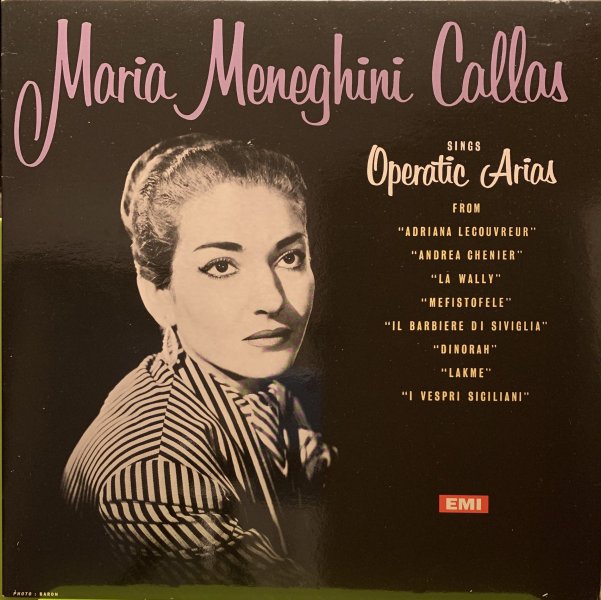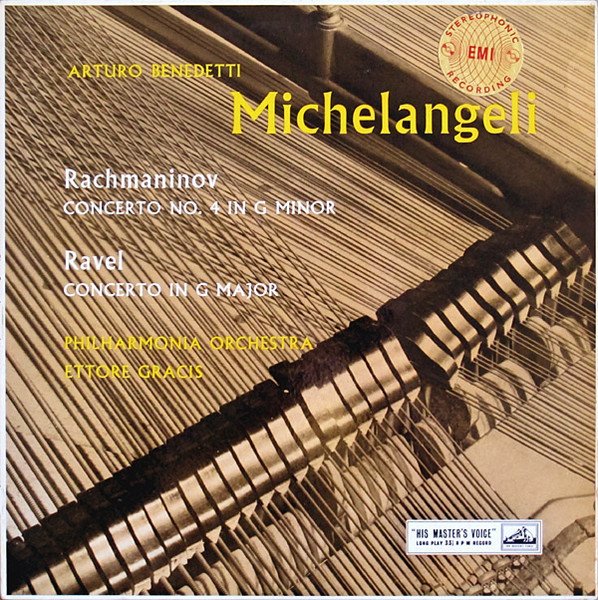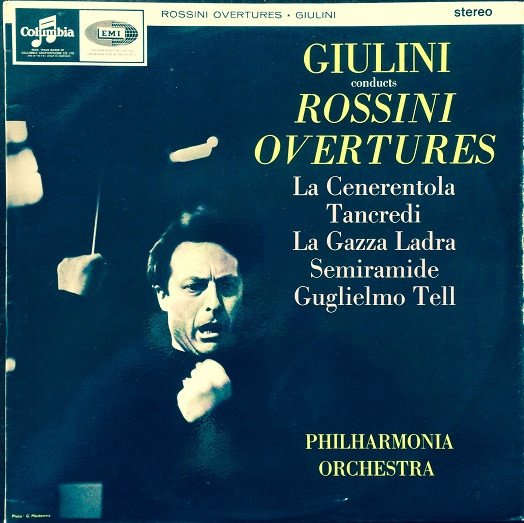Late last year, I read on a tape forum that an Italian audio magazine called Audiophile Sound, which had already released several LPs of early EMI recordings, has secured the right to release tape copies from the EMI catalogue. Even though the LPs were mastered from digital files, the tape copies would be made directly from the analog master tapes. The first three tapes due for release include a mono and two stereo titles. Intrigued, I got in touch with the editor, a gentleman named Pierre Buldoc. He is extremely knowledgeable in classical music in general, and in historical recordings in particular. He told me that Abbey Road Studios had made direct 1:1 copies of the EMI master tapes for him, which he will use as production masters to produce his commercial releases. Even though the tapes were not yet ready for release commercially, he was kind enough to make me advance copies of all three titles. Due to COVID disruptions, it took about three months to receive the copies. Since the printed materials were not yet ready, I only received the tapes in the boxes but without labels or booklets.
Here is some information on these tapes provided by Pierre.
"As far as the three titles are concerned, the masters are all on ¼’’ tape. Abbey Road using a Studer A80 duplicates for us, flat and back to back, the original masters (edited work parts on ¼’’ tape) onto another Studer A80 this time however equipped with ½’’ tape heads. Like this we lose very little in the making of our production master, maybe 1 db. The production master on ½’’ tape therefore becomes our master and is then played back on an Ampex ATR 102 which then sends the signal straight to the duplicating recorder, another Studer A 80 this time modified by the late Tim de Paravicini. Cabling is all by Yamamura."
There is a choice of using the SM900 studio mastering tape, or the thinner LPR90 long play tape, which will save a little bit of money and space. The customer can also choose between IEC/CCIR or NAB equalizations. For 15ips, I prefer IEC/CCIR. The cost is 200 Euros per album.
The first tape I listened to was one of my favorite recordings, a mono recording of Maria Callas singing opera arias (33CX 1231, recorded in 1954). Playing the tape with my Nagra T Audio through my tube tape head preamp, the first thing that struck me was the crystalline clarity of Callas's voice. Even though the sound was bunched into the center, since it was in mono, there was good depth perception. In fact, one can hear the layers of instruments, with the voice floating in front occupying its own space. The voice has tremendous body and presence. The dynamic range of the recording is very wide, since unlike many coloratura sopranos, Callas' dramatic voice could sustain the volume to the extreme of her high register, and the range from the quietest pianissimo to the loudest fortissimo is huge. The background noise of the tape is low, which is remarkable given its age and the lack of any noise reduction technology at the time. I could actually detect tape saturation at one point when she hit a high note with full force. Another remarkable aspect is the transparency, and one can really hear into the recording, clearly distinguishing all the instruments playing behind her even without the stereo spatial cues. The woodwinds have a wonderful tone as one can hear the vibrations from the body of the instruments.
After going through the tape, I turned to the LP, a reissue by Testament. This was played on my Garrard 301/SME 3012 with the Ikeda 9Mono cartridge. The phono preamp is of the same design as my tape head preamp, but built on PCB rather than with point-to-point wiring. Overall, the sound is a little less transparent on the LP. There is less depth, and the voice is not as well separated spatially from the orchestra. The dynamic range also seems a bit compressed compared to the tape, but not dramatically so. At the beginning of "Poveri Fiori", the strings have a bit less air, and sound less transparent. "Ebben? Ne Andò Lontana" from La Wally sounds a bit less stirring on LP than on tape. On "Cavatina: Una Voce Poco Fà" from Il Barbiere Di Siviglia, the pizzicato strings that accompanied the voice at the beginning sound less dynamic on the LP. It has visceral impact on the tape, even though it is played quite softly. One can feel the vibrations after the strings have been plucked. On the Bell Song from Lakme, when the tambourines come in at around 4 minutes, one can hear more depth on the tape, and they have more separation from the rest of the orchestra. On the plus side, the LP is tonally indistinguishable from the tape, which means nobody tried to "improve" the tonal balance Legge originally intended. The deficiencies of the LP that I mentioned, if they can be called that, are sins of omission, not commission, but the same cannot be said about some of the other reissue LPs I have heard.
Here is some information on these tapes provided by Pierre.
"As far as the three titles are concerned, the masters are all on ¼’’ tape. Abbey Road using a Studer A80 duplicates for us, flat and back to back, the original masters (edited work parts on ¼’’ tape) onto another Studer A80 this time however equipped with ½’’ tape heads. Like this we lose very little in the making of our production master, maybe 1 db. The production master on ½’’ tape therefore becomes our master and is then played back on an Ampex ATR 102 which then sends the signal straight to the duplicating recorder, another Studer A 80 this time modified by the late Tim de Paravicini. Cabling is all by Yamamura."
There is a choice of using the SM900 studio mastering tape, or the thinner LPR90 long play tape, which will save a little bit of money and space. The customer can also choose between IEC/CCIR or NAB equalizations. For 15ips, I prefer IEC/CCIR. The cost is 200 Euros per album.
The first tape I listened to was one of my favorite recordings, a mono recording of Maria Callas singing opera arias (33CX 1231, recorded in 1954). Playing the tape with my Nagra T Audio through my tube tape head preamp, the first thing that struck me was the crystalline clarity of Callas's voice. Even though the sound was bunched into the center, since it was in mono, there was good depth perception. In fact, one can hear the layers of instruments, with the voice floating in front occupying its own space. The voice has tremendous body and presence. The dynamic range of the recording is very wide, since unlike many coloratura sopranos, Callas' dramatic voice could sustain the volume to the extreme of her high register, and the range from the quietest pianissimo to the loudest fortissimo is huge. The background noise of the tape is low, which is remarkable given its age and the lack of any noise reduction technology at the time. I could actually detect tape saturation at one point when she hit a high note with full force. Another remarkable aspect is the transparency, and one can really hear into the recording, clearly distinguishing all the instruments playing behind her even without the stereo spatial cues. The woodwinds have a wonderful tone as one can hear the vibrations from the body of the instruments.
After going through the tape, I turned to the LP, a reissue by Testament. This was played on my Garrard 301/SME 3012 with the Ikeda 9Mono cartridge. The phono preamp is of the same design as my tape head preamp, but built on PCB rather than with point-to-point wiring. Overall, the sound is a little less transparent on the LP. There is less depth, and the voice is not as well separated spatially from the orchestra. The dynamic range also seems a bit compressed compared to the tape, but not dramatically so. At the beginning of "Poveri Fiori", the strings have a bit less air, and sound less transparent. "Ebben? Ne Andò Lontana" from La Wally sounds a bit less stirring on LP than on tape. On "Cavatina: Una Voce Poco Fà" from Il Barbiere Di Siviglia, the pizzicato strings that accompanied the voice at the beginning sound less dynamic on the LP. It has visceral impact on the tape, even though it is played quite softly. One can feel the vibrations after the strings have been plucked. On the Bell Song from Lakme, when the tambourines come in at around 4 minutes, one can hear more depth on the tape, and they have more separation from the rest of the orchestra. On the plus side, the LP is tonally indistinguishable from the tape, which means nobody tried to "improve" the tonal balance Legge originally intended. The deficiencies of the LP that I mentioned, if they can be called that, are sins of omission, not commission, but the same cannot be said about some of the other reissue LPs I have heard.
Attachments
Last edited:




